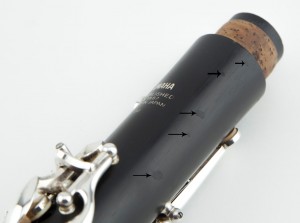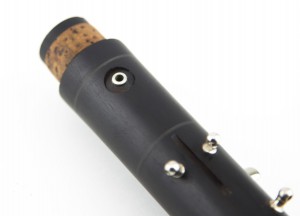Repairing a Wood Clarinet
Banding vs. Pinning
It’s common knowledge that wood clarinets are susceptible to cracking. Even when great care is taken with proper maintenance, awareness of climate changes, humidity levels, and following all due caution it can happen, a big ugly crack in your expensive wood instrument. Worst yet, the crack is not cosmetic but allows air to leak out of the instrument diminishing, or eliminating the playability.
The goal of a repair is to seal and secure the crack to restore the original performance of the instrument. There are many techniques and methods to pinning a clarinet, but the basic concept is small pins being used to “squeeze” the crack closed, in effect sealing it, then filling in the holes and seam using various methods. When done correctly, it can be very difficult to identify there was ever a repair to the instrument. This process is the traditional process that has been used for a very long time in repairing cracked clarinets.
A newer alternative to pinning is called banding. When “banding” a crack on a clarinet, small grooves are cut into the outer layer of wood. Carbon fiber strands are wrapped tightly around the instrument, in effect sealing the crack. There are many layers of individual strands, which creates an incredibly strong bond. Again, there are several techniques to perform the repair, but the basic concept is essentially wrapping one or more bands around the affected area.
While the finished look of the repair is more obvious when an instrument is banded, in theory the repair should be much stronger as it provides a full 360 degrees of even pressure around the crack, as opposed to a pin which is essentially a screw that pulls the wood together at a single point.
Which is better? At Paul Effman Music, we evaluate the crack(s) to determine which method would be best. In a single small crack for example, a pin would be more appropriate. It’s unlikely the repair would fail and a customer would be hard pressed to see the repair.
In the picture in this article, the banded clarinet had two cracks 180 degrees apart. Pinning both sides of the instrument could potentially compromise the integrity of the bore. While the banding is cosmetically very obvious, it was the appropriate choice for this repair. We were able to seal the cracks without compromising the bore of the instrument.
For more information, contact us at 516.433.1107 or visit www.pemusicstore.com.


